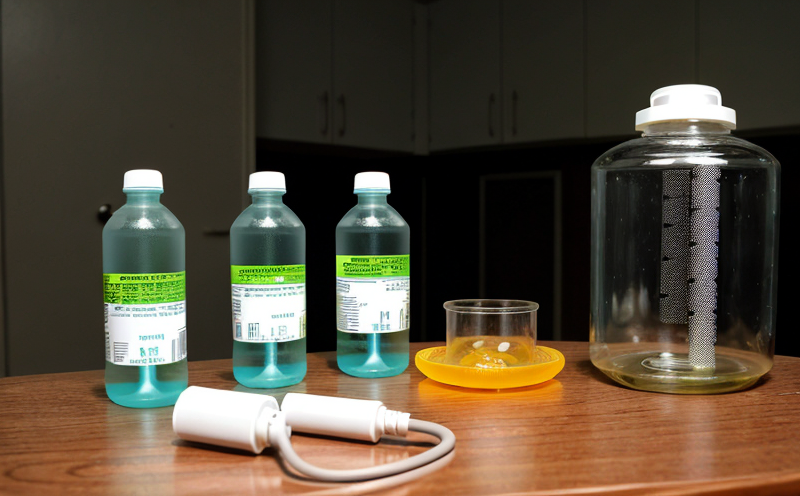EPA 913 Radon in Water Degassing Test
The EPA Method 913 is a standardized procedure used to determine radon concentration levels in water. This method, developed by the United States Environmental Protection Agency (EPA), ensures accurate and precise measurement of radon gas dissolved in drinking water samples. This test is crucial for compliance with regulatory standards such as those found in Title 40 Code of Federal Regulations Part 141.
The procedure involves degassing the water sample to release radon into the headspace, followed by measurement using a scintillation detector or other suitable instrumentation. The degassing step is critical and must be conducted under controlled conditions to ensure accurate results. The test requires a thorough understanding of the physical chemistry involved in radon's behavior within water matrices.
One of the key aspects of this method is the use of proper sample preparation techniques, which include ensuring that the sample does not come into contact with air before degassing. This prevents any potential interference from other gases present in the headspace. The instrumentation used for measuring radon gas must be calibrated regularly to ensure accuracy.
The EPA 913 test is particularly important for quality managers and compliance officers who need to ensure that their water sources meet strict regulatory requirements. For R&D engineers, this method provides a reliable approach to understanding the behavior of radon in different types of water sources. Procurement professionals can rely on these results when selecting suppliers or designing systems capable of meeting these standards.
The test also plays an essential role in environmental protection by ensuring that drinking water is safe for consumption without exposing individuals to harmful levels of radon. By adhering to this method, laboratories and testing facilities contribute significantly to public health and safety.
- Reduces the risk of exposure to radon gas
- Promotes compliance with national standards
- Safeguards public health by ensuring water quality
- Supports regulatory requirements for drinking water supplies
The EPA 913 Radon in Water Degassing Test is a vital tool in maintaining the safety and quality of our water resources. It helps protect both human health and the environment from harmful radon contamination.
Industry Applications
The EPA Method 913 finds extensive application across various sectors including public utilities, private water companies, environmental consulting firms, and government agencies responsible for water quality assurance. These entities rely on this method to ensure that their products meet stringent regulatory requirements.
For instance, public utilities must regularly test their water supplies to comply with federal regulations regarding radon levels in drinking water. Private water companies also use the EPA 913 method to maintain their reputation for providing safe and reliable services. Environmental consulting firms often employ this technique during site investigations where contaminated groundwater needs to be assessed.
Government agencies responsible for environmental protection frequently utilize the EPA Method 913 as part of their broader initiatives aimed at safeguarding public health. By employing this standardized procedure, they can effectively monitor radon concentrations in water sources across different regions and communities.
Frequently Asked Questions
Environmental and Sustainability Contributions
The EPA Method 913 plays a significant role in promoting environmental sustainability by ensuring that water supplies are free from harmful levels of radon. By implementing this method, organizations contribute to the overall goal of reducing exposure to radon gas, which can have adverse health effects if present at elevated concentrations.
Through adherence to EPA Method 913, laboratories and testing facilities help protect ecosystems by preventing contamination of water bodies with radon-laden wastewater. This practice supports broader efforts towards sustainable resource management and preservation of natural habitats.
Use Cases and Application Examples
The EPA 913 Radon in Water Degassing Test is widely used in scenarios where compliance with regulatory standards is paramount. Here are some practical examples:
- Water Quality Assurance Programs: Public utilities conduct regular testing to ensure that their water supplies meet federal and state guidelines.
- Environmental Monitoring: Government agencies use this method during investigations involving contaminated groundwater.
- Private Water Companies: These companies implement the EPA 913 test as part of their quality assurance protocols.
In each case, the primary goal is to provide safe and reliable water sources free from harmful radon contamination. The EPA Method 913 serves as a cornerstone in these efforts by offering a standardized approach to accurate measurement.





